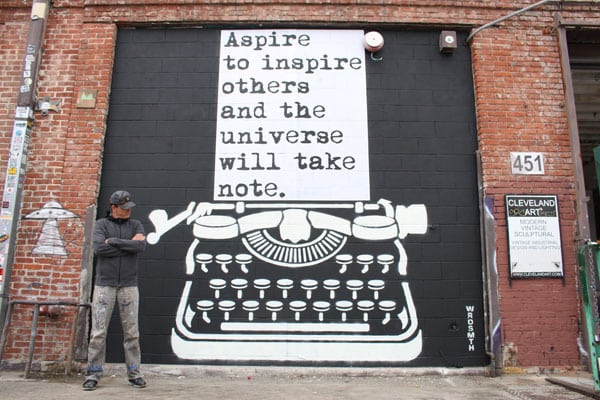
July 11, 2018; WFYI.org
Wheeler Mission is placing sidewalk art throughout Indianapolis featuring lifelike and life-size images of homeless women and children huddling together on the sidewalk. This provocative campaign is one of likely many strategies this shelter for the homeless is deploying to complete an 18-month, $1.25 million capital campaign to meet the rising need for its services. Will people avert their eyes and step on or over the art? Will a critical few stop to text “WHEELER125” to donate and then follow and share the #BuildingforChange campaign story online?
Only time will tell if the strategy and expense of positioning vinyl posters on busy city sidewalks is more effective than, say, direct mail, Facebook ads, or individual solicitations. That they are even using this creative tactic is what is worthy of notice by Sarah Panfil at WFYI Public Media, a subsidiary of (PBS) Metropolitan Indianapolis Public Media.
Wheeler Mission Chief Development Officer Steve Kerr says he hopes the guerrilla art campaign will raise awareness of homelessness and elicit emotion.
“There’s sort of a mental or emotional denial that we have moms and children with no place to sleep,” Kerr says. “This is a community problem that we need to come together and solve.”
Kerr says in the past couple of years, it’s become the new norm for women and children to sleep on the floor of Wheeler Mission’s gymnasium because of the lack of bed space. That realization lead to this campaign.
Sign up for our free newsletters
Subscribe to NPQ's newsletters to have our top stories delivered directly to your inbox.
By signing up, you agree to our privacy policy and terms of use, and to receive messages from NPQ and our partners.
Wheeler Mission served 108 women in its first year 125 years ago. Today, more than 700 requests for shelter and services are denied every month for lack of capacity. This campaign will raise the funds necessary to add more than 164 shelter beds and 30 independent apartments for homeless mothers and children.
For Wheeler Mission, Indianapolis is its canvas. Even if they could justify the expense of billboards and bus wraps, these powerful images placed on sidewalks are arguably truer to the mission and carry greater impact. Who shares a Facebook fundraising ad or a direct mail appeal, anyway? Street art is perfect for Instagram and other social channels.
Not a few causes might do well by studying this grassroots #BuildingForChange campaign. Wheeler Mission’s street campaign does not require city approval. Most communities and public opinion respect acts of proper artistic expression added to the public places it adorns. At least one federal court decision legitimizes and protects this art.
Nonprofit marketers inspired and perhaps awakened by Wheeler Mission’s example may want to consider the many more forms of taking their messages to the streets, most of them being inexpensive and accessible. Consider wheat pasting and yarn bombing. There is casting laser projections onto large city buildings, mosaic tiling, murals, stencil art, sticker art, LED art, “Lock On” sculptures, and street installations. NPQ has profiled many examples of this form of art, such as here, here and here.
Do you have street art ideas to share with our readers?—Jim Schaffer













